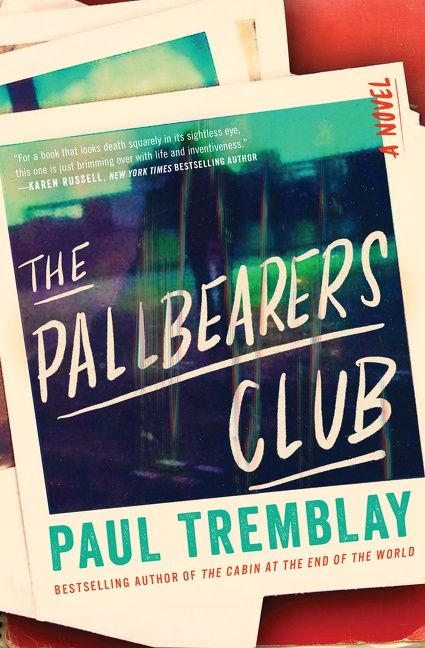
Here’s a story about reading Paul Tremblay. Some years ago, I was set to fly home from Edinburgh when my flight was canceled and rescheduled for the next day. By the time lodging had been sorted out, I probably could have ventured back into Edinburgh for one last dinner, one last pin of beer. But at that point, I was fully immersed in Tremblay’s novel The Cabin at the End of the World, and there was no separating me from my hotel room. Tremblay’s very good at that — that slow build of quotidian details that seems innocuous until it turns out to have you wholly entangled.
That in and of itself would make Tremblay’s fiction worth reading. But he has another skill that he’s worked wonders with — a fine-tuned command of when to deploy narrative ambiguity. To wit: Paul Tremblay’s The Pallbearers Club is a stark evocation of a lonesome New England life. Paul Tremblay’s The Pallbearers Club is about a horrific secret bubbling just below the surface of a small town. One or both of these things might be true. This could be a supernaturally-driven horror story or a psychologically rich character study. As it turns out, neither option is especially comforting.
The Pallbearers Club is presented as a found document. Or, to be more specific, a found and subsequently annotated document. At the root of it is the narrative of one Art Barbara, a pseudonymous writer who begins the narrative in his high school days and is writing from the vantage point of several decades hence. Annotating the novel is his estranged friend Mercy. The two met when a high school-aged Art formed an organization to assist at local funerals which Mercy joined after finding a flyer.
Over the course of the years that follow, Art and Mercy’s friendship waxes and wanes, as do their respective fortunes. These ebbs and flows of life feel realistic and lived-in — actually, much of the book does, especially the bittersweet tone of Mercy’s comments on Art’s manuscript.
Early in the novel, Art and Mercy look at some century-old news clippings about a mysterious death in the area — one in which vampirism was suspected as the cause of certain bizarre goings-on in the region. This ends up tilting Art’s narrative in an increasingly paranoid direction — both about the influence of those closest to him and of one person’s ability to damage and drain the life around them.
Much of which gives this novel its power is its duality. There’s a moment late in the book that could be interpreted in a myriad number of ways, and how you interpret it will shape much of what’s come before. In a novel like this, with multiple narrators, can you assume at least one is reliable? There lies the question, as the saying goes.
Some of Tremblay’s work has been rumored to be headed to the silver screen, including the aforementioned The Cabin at the End of the World. What’s most interesting about this novel, then, is how it feels at times like a reaction to that. It’s difficult to imagine this being adapted into any other medium and working nearly as well; while Tremblay is a detailed and deft writer, this is his greatest embrace yet of the tools available in literature alone. And oh, what he’s done with it.
***
The Pallbearers Club
by Paul Tremblay
William Morrow; 278 p.
Follow Vol. 1 Brooklyn on Twitter, Facebook, and sign up for our mailing list.
